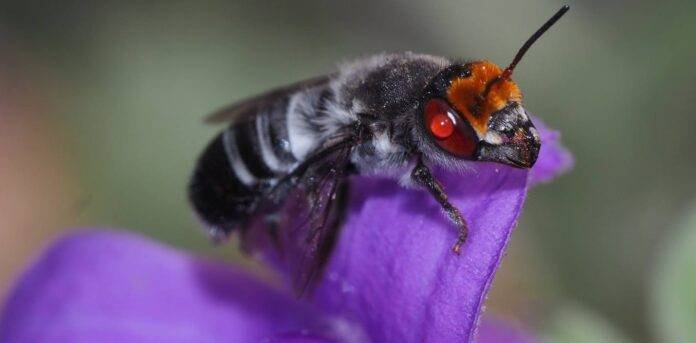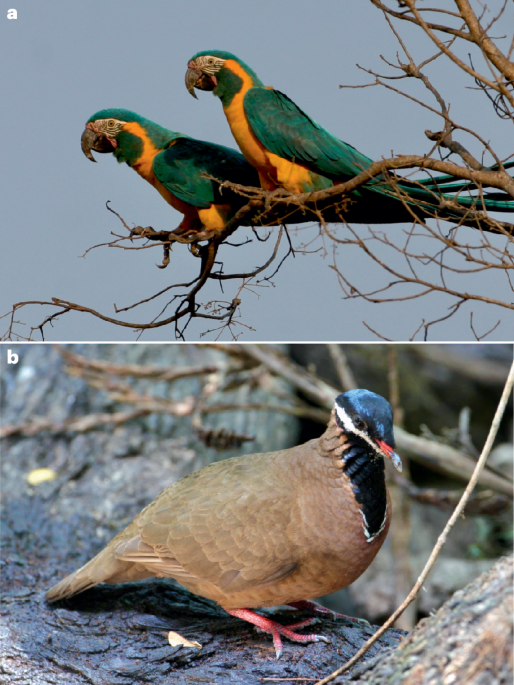UNHSP. World Cities Report 2022. (2022). https://unhabitat.org/wcr/.
Lai, H., Flies, E. J., Weinstein, P. & Woodward, A. The impact of green space and biodiversity on health. Front. Ecol. Environ. 17, 383–390 (2019).
Marselle, M. R., Lindley, S. J., Cook, P. A. & Bonn, A. Biodiversity and health in the urban environment. Curr. Environ. Health Rep. 8, 146–156 (2021).
Gianfredi, V. et al. Urban green spaces and public health outcomes: A systematic review of literature. Eur. J. Public. Health 31, ckab164638 (2021).
Wang, J. et al. Long-term exposure to residential greenness and decreased risk of depression and anxiety. Nat. Mental Health 2, 525–534 (2024).
Grabowski, Z. et al. Cosmopolitan conservation: The multi-scalar contributions of urban green infrastructure to biodiversity protection. Biodivers. Conserv. 32, 3595–3606 (2023).
Sweet, F. S. T., Apfelbeck, B., Hanusch, M., Garland Monteagudo, C. & Weisser, W. W. Data from public and governmental databases show that a large proportion of the regional animal species pool occur in cities in Germany. J. Urban Ecol. 8, (2022).
Olive, A. & Minichiello, A. Wild things in urban places: America’s largest cities and multi-scales of governance for endangered species conservation. Appl. Geogr. 43, 56–66 (2013).
Planchuelo, G., von Der Lippe, M. & Kowarik, I. Untangling the role of urban ecosystems as habitats for endangered plant species. Landsc. Urban Plan. 189, 320–334 (2019).
Lepczyk, C. et al. Global patterns and drivers of urban bird diversity. In Ecology and Conservation of Birds in Urban Environments 13–33 (2017).
Garrard, G. E., Williams, N. S. G., Mata, L., Thomas, J. & Bekessy, S. A. Biodiversity sensitive urban design. Conserv. Lett. 11, e12411 (2018).
Weisser, W. W. & Hauck, T. E. Animal-Aided Design—planning for biodiversity in the built environment by embedding a species’ life-cycle into landscape architectural and urban design processes. Landsc. Res. 1–22 (2024).
Bekessy, S. A. et al. Transparent planning for biodiversity and development in the urban fringe. Landsc. Urban Plan. 108, 140–149 (2012).
De Martino, R., Franchino, R. & Frettoloso, C. A. Stepping stone approach to exploiting urban density. In Technological Imagination in the Green and Digital Transition (eds Arbizzani, E. et al.) 639–647 (Springer, 2023) https://doi.org/10.1007/978-3-031-29515-7_57.
Aronson, M. F. J. et al. A global analysis of the impacts of urbanization on bird and plant diversity reveals key anthropogenic drivers. Proc. R. Soc. B. 281, 20133330 (2014).
Lepczyk, C. A. et al. Biodiversity in the city: Fundamental questions for understanding the ecology of urban green spaces for biodiversity conservation. BioScience 67, 799–807 (2017).
Sandström, U. G., Angelstam, P. & Khakee, A. Urban comprehensive planning—identifying barriers for the maintenance of functional habitat networks. Landsc. Urban Plan. 75, 43–57 (2006).
Kahl, S., Wood, C. M., Eibl, M. & Klinck, H. BirdNET: A deep learning solution for avian diversity monitoring. Ecol. Inf. 61, (2021).
Barthel, P. H. & Krüger, T. Liste der Vögel Deutschlands: Version 3.2. (2019).
Pérez-Granados, C. A. First assessment of Birdnet performance at varying distances: A playback experiment. Ardeola 70, 221–233 (2023).
Arif, M., Hedley, R. & Bayne, E. Testing the accuracy of a BirdNET. Automatic Bird. Song Classifier 7 (2020).
Manzano-Rubio, R. Low-cost open-source recorders and ready-to-use machine learning approaches provide effective monitoring of threatened species. Ecol. Inf. 72, (2022).
Cole, J. S., Michel, N. L., Emerson, S. A. & Siegel, R. B. Automated bird sound classifications of long-duration recordings produce occupancy model outputs similar to manually annotated data. Ornithol. Appl. 124, 1–15 (2022).
Bota, G., Manzano-Rubio, R., Catalán, L. & Gómez-Catasús, J. Pérez-Granados, C. Hearing to the unseen: Audiomoth and birdNET as a cheap and easy method for monitoring cryptic bird species. Sensors 23, 7176 (2023).
McGinn, K., Kahl, S., Peery, M. Z., Klinck, H. & Wood, C. M. Feature embeddings from the BirdNET algorithm provide insights into avian ecology. Ecol. Inf. 74, 101995 (2023).
Fairbairn, A. J., Burmeister, J. S., Weisser, W. W. & Meyer, S. T. BirdNET is as good as experts for acoustic bird monitoring in a European city. 09.17.613451 Preprint at https://doi.org/10.1101/2024.09.17.613451 (2024).
Borker, A. L. et al. Vocal activity as a low cost and scalable index of seabird colony size. Conserv. Biol. 28, 1100–1108 (2014).
Pérez-Granados, C. et al. Vocal activity rate index: A useful method to infer terrestrial bird abundance with acoustic monitoring. Ibis 161, 901–907 (2019).
Pérez-Granados, C. et al. Effort needed to accurately estimate vocal activity rate index using acoustic monitoring: A case study with a dawn-time singing passerine. Ecol. Indic. 107, 105608 (2019).
Zhao, K., Chen, G., Liu, Y., Møller, A. P. & Zhang, Y. Population size assessment of adélie Penguin (Pygoscelis adeliae) chicks based on vocal activity rate index. Global Ecol. Conserv. 38, e02263 (2022).
Hutschenreiter, A. et al. How to count bird calls? Vocal activity indices May provide different insights into bird abundance and behaviour depending on species traits. Methods Ecol. Evol. 15, 1071–1083 (2024).
Benedetti, Y. et al. EVI and NDVI as proxies for multifaceted avian diversity in urban areas. Ecol. Appl. N/a, e2808 (2023).
Bino, G. et al. Accurate prediction of bird species richness patterns in an urban environment using Landsat-derived NDVI and spectral unmixing. Int. J. Remote Sens. 29, 3675–3700 (2008).
Kontsiotis, V. J., Chatzigiovanakis, S., Valsamidis, E., Xofis, P. & Liordos, V. Normalized difference vegetation index as a proxy of urban bird species presence and distribution at different Spatial scales. Diversity 15, 1139 (2023).
Leveau, L. M. Primary productivity and habitat diversity predict bird species richness and composition along urban-rural gradients of central Argentina. Urban Urban Green. 43, 126349 (2019).
Carlson, T. N. & Ripley, D. A. On the relation between NDVI, fractional vegetation cover, and leaf area index. Remote Sens. Environ. 62, 241–252 (1997).
Van Wagtendonk, J. W. & Root, R. R. The use of multi-temporal Landsat normalized difference vegetation index (NDVI) data for mapping fuel models in Yosemite National park, USA. Int. J. Remote Sens. 24, 1639–1651 (2003).
Geerken, R., Zaitchik, B. & Evans, J. P. Classifying rangeland vegetation type and coverage from NDVI time series using fourier filtered cycle similarity. Int. J. Remote Sens. 26, 5535–5554 (2005).
Yan, E., Wang, G., Lin, H., Xia, C. & Sun, H. Phenology-based classification of vegetation cover types in Northeast China using MODIS NDVI and EVI time series. Int. J. Remote Sens. 36, 489–512 (2015).
Huang, S., Tang, L., Hupy, J. P., Wang, Y. & Shao, G. A commentary review on the use of normalized difference vegetation index (NDVI) in the era of popular remote sensing. J. For. Res. 32, 1–6 (2021).
Hashim, H., Abd Latif, Z. & Adnan, N. A. Urban vegetation classification with NDVI threshold value method with very high resolution (VHR) pleiades. In The International Archives of the Photogrammetry, Remote Sensing and Spatial Information Sciences vol. XLII-4-W16 237–240 (Copernicus GmbH, 2019).
Fairbairn, A. J. et al. Urban biodiversity is affected by human-designed features of public squares. Nat. Cities. 1–10 (2024).
Mühlbauer, M., Weisser, W. W., Müller, N. & Meyer, S. T. A green design of City squares increases abundance and diversity of birds. Basic. Appl. Ecol. 56, 446–459 (2021).
Chace, J. F. & Walsh, J. J. Urban effects on native avifauna: A review. Landsc. Urban Plan. 74, 46–69 (2006).
Gebremichael, G. et al. Bird community composition and functional guilds response to vegetation structure in Southwest Ethiopia. Forests 13, 2068 (2022).
Zhang, Q., Han, R., Huang, Z. & Zou, F. Linking vegetation structure and bird organization: Response of mixed-species bird flocks to forest succession in subtropical China. Biodivers. Conserv. 22, 1965–1989 (2013).
Hijmans, R. J. Terra: Spatial Data Analysis. https://rspatial.org/ (2024).
Martin, T. E. et al. Variability in the effectiveness of two ornithological survey methods between tropical forest ecosystems. PLoS ONE. 12, e0169786 (2017).
Chamberlain, S. A. & Boettiger, C. R. Python, and Ruby clients for GBIF species occurrence data. Preprint at https://doi.org/10.7287/peerj.preprints.3304v1 (2017).
Chamberlain, S. et al. Rgbif: Interface to the Global Biodiversity Information Facility API. (2025).
Mondal, P. Quantifying surface gradients with a 2-band enhanced vegetation index (EVI2). Ecol. Ind. 11, 918–924 (2011).
Taubenböck, H., Esch, T., Wurm, M., Roth, A. & Dech, S. Object-based feature extraction using high Spatial resolution satellite data of urban areas. J. Spat. Sci. 55, 117–132 (2010).
Wurm, M., Taubenböck, H., Schardt, M., Esch, T. & Dech, S. Object-based image information fusion using multisensor Earth observation data over urban areas. Int. J. Image Data Fus. 2, 121–147 (2011).
Deparis, M. et al. Linking plant diversity and urban uses at the City-Block scale to inform urban planning. Land 14, 3 (2025).
Snow, D. W. The migration and dispersal of British Blackbirds. Bird. Study. 13, 237–255 (1966).
Ferry, C., Frochot, B. & Leruth, Y. Territory and home range of the Blackcap (Sylvia Atricapilla) and some other passerines, assessed and compared by mapping and Capture-Recapture. Stud. Avian Biol. 6, 119–120 (1981).
Cinelli, C., Ferwerda, J. & Hazlett, C. Sensemakr: Sensitivity Analysis Tools for Regression Models. (2024).
Naimi, B., Hamm, N., Groen, T. A., Skidmore, A. K. & Toxopeus, A. G. Where is positional uncertainty a problem for species distribution modelling. Ecography 37, 191–203 (2014).
Hartig, F. DHARMa: Residual Diagnostics for Hierarchical (Multi-Level/Mixed) Regression Models. (2024).
Oksanen, J., et al. Vegan: Community Ecology Package. (2020). https://CRAN.R-project.org/package=vegan
Tobias, J. A. et al. AVONET: Morphological, ecological and geographical data for all birds. Ecol. Lett. 25, 581–597 (2022).
Croci, S., Butet, A. & Clergeau, P. Does urbanization filter birds on the basis of their biological traits. Condor 110, 223–240 (2008).
Legendre, P. Lmodel2: Model II Regression. (2018). https://CRAN.R-project.org/package=lmodel2
Winiarska, D., Szymański, P. & Osiejuk, T. S. Detection ranges of forest bird vocalisations: Guidelines for passive acoustic monitoring. Sci. Rep. 14, 894 (2024).
Pérez Granados, C., Bota, G., Albarracín, J., Giralt, D. & Traba, J. Cost-Effectiveness assessment of five audio recording systems for wildlife monitoring: Differences between recording distances and singing direction. Ardeola 66, 311–325 (2019).
Budka, M., Jobda, M., Szałański, P. & Piórkowski, H. Acoustic approach as an alternative to human-based survey in bird biodiversity monitoring in agricultural meadows. PLoS ONE. 17, e0266557 (2022).
James Reynolds, S., Ibáñez-Álamo, J. D., Sumasgutner, P. & Mainwaring, M. C. Urbanisation and nest Building in birds: A review of threats and opportunities. J. Ornithol. 160, 841–860 (2019).
Derryberry, E. P. & Coomes, C. M. Providing urban birds nutritious food to feed chicks reduces urban versus rural breeding success disparities. J. Anim. Ecol. 89, 1546–1548 (2020).
Burt, S. A., Vos, C. J., Buijs, J. A. & Corbee, R. J. Nutritional implications of feeding free-living birds in public urban areas. J. Animm Physiol. Anim. Nutr. 105, 385–393 (2021).
Tremblay, M. A. & St. Clair, C. C. Permeability of a heterogeneous urban landscape to the movements of forest songbirds. J. Appl. Ecol. 48, 679–688 (2011).
Loss, S. R., Will, T. & Marra, P. P. Direct mortality of birds from anthropogenic causes. Annu. Rev. Ecol. Evol. Syst. 46, 99–120 (2015).
Dale, S. Urban bird community composition influenced by size of urban green spaces, presence of native forest, and urbanization. Urban Ecosyst. 21, 1–14 (2018).
Dyson, K. Conserving native trees increases native bird diversity and community composition on commercial office developments. J. Urban Ecol. 6, juaa033 (2020).
Campos-Silva, L. A. & Piratelli, A. J. Vegetation structure drives taxonomic diversity and functional traits of birds in urban private native forest fragments. Urban Ecosyst. 24, 375–390 (2021).
Lee, T. S. et al. A framework to identify priority wetland habitats and movement corridors for urban amphibian conservation. Ecol. Solut. Evid. 3, e12139 (2022).
Lee, G., Hwang, J. & Cho, S. A novel index to detect vegetation in urban areas using UAV-Based multispectral images. Appl. Sci. 11, 3472 (2021).
van den Berg, A. Staatsbroeders: Hoe Leefomgeving En Bouwstijl Beïnvloeden Vogeldiversiteit (Natuurhistorisch Museum Rotterdam, 2021).
Curipaco Quinto, P. Z. & Quispe-Melgar, H. R. Siguas Robles, O. Plant composition, water resources and built structures influence bird diversity: A case study in a high Andean City with homogeneous soundscape. Urban Ecosyst. 27, 1–14 (2024).






